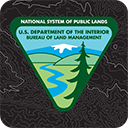During Native American Heritage Month, a reminder of the power of Indigenous knowledge
By Derrick Henry, BLM Public Affairs Specialist
During Native American Heritage Month and throughout the year, the Bureau of Land Management (BLM) and its partners share history and elevate the legacy of America’s Indigenous peoples, the original pioneers. While it is a celebration of culture and tradition, it is also a vital part of the current Administration’s work to address climate change, manage public lands, support job creation, and serve communities that have been historically marginalized. Now more than ever, we need the power of Indigenous knowledge to make our work whole.
Native American roots are deeply embedded in this land — a homeland loved, nurtured, strengthened, and fought for with honor and conviction. These roots, stretching back to before the founding of the United States, are an important source of information for strong, inclusive land management policy.
For the BLM, we rely extensively on tribal consultation, which enables us to develop relationships; gather perspectives on land use; help to include tribal information as a necessary factor in defining proposed options for managing certain lands; and making sure that we properly document all this for any later use. As an agency, we respect the ties that native and traditional communities have to the land. We also understand that tribal sovereignty and self-governance, as well as honoring the federal trust responsibility to tribal nations, must be the cornerstones of federal Indian policy.
For example, the BLM conducted tribal consultations regarding a recent review of the monument boundaries and conditions of the Bears Ears and Grand Staircase-Escalante National Monuments in Utah. This review was important because national monument designations protect sacred tribal lands, which are part of traditional land uses for many Native American communities.
We also plan to initiate formal tribal consultation for the consideration of a 20-year withdrawal of federal lands within a 10-mile radius around Chaco Culture National Historical Park, which would bar new federal oil and gas leasing on those lands in New Mexico. Our goal is to manage existing energy development, honor sensitive areas important to Tribes, and build collaborative management frameworks toward a sustainable economic future for the region. With the mix of cultural, conservation and energy issues, any final decisions will benefit from tribal consultation.
Tribal consultation helps the BLM to identify the cultural values; the religious beliefs; the traditional practices; places of value for subsistence practices; hunting, gathering and fishing rights; and the legal rights of Native American people, which could be affected by BLM actions on public lands. We best serve when we speak with and listen to tribal voices.
More than 100 years before the BLM was established, Choctaw Chief George Washington Harkins made it clear that his people would retain a connection to their homeland, despite being forced to leave under the Indian Removal Act. In Harkins’s Letter to the American People, printed in newspapers across the country in 1832, his Indigenous perspective on ties to the land remains timeless:
Here is the land of our progenitors, and here are their bones; they left them as a sacred deposit, and we have been compelled to venerate its trust; it is dear to us, yet we cannot stay, my people are dear to me, with them I must go.
The United States has made solemn promises to tribal nations for more than two centuries. Honoring those commitments is particularly vital now, as we face crises related to health, the economy, racial justice, and climate change — all of which disproportionately harm Native Americans.
Through tribal consultation, we are in the best position yet to honor these commitments. And through awareness maintained by Native American Heritage Month, we will continue to honor the precious, strong, and enduring cultures and contributions of all Native Americans and recommit ourselves to fulfilling the full promise of our nation.
